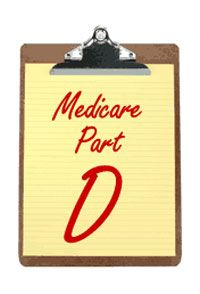Publication
Article
Psychiatric Times
Medicare Prepares Reversal on Covering All Antidepressants and Antipsychotics
Author(s):
The Medicare program appears to have reversed itself and now is seriously considering removing anti-depressants and antipsychotics from its “protected” status on Part D drug plan formularies.

The Medicare program appears to have reversed itself and now is seriously considering removing anti-depressants and antipsychotics from its “protected” status on Part D drug plan formularies. Six drug categories-immunosuppressants, antidepressants, antipsychotics, anticonvulsants, antiretrovirals, and antineo-plastics-are protected. This means that Part D plans must offer “all or substantially all” of the chemically distinct products in those categories. Elsewhere on the formulary, the plan needs to offer only 2 product selections in each category, often a brand name and a generic substitute.
“I am not naive; they are reserving the right at a future date to whack out antidepressants and antipsychotics,” acknowledged Andrew Sperling, director of federal legislative advocacy for the National Alliance on Mental Illness (NAMI).
The announcement by the Centers for Medicare and Medicaid Services (CMS) that it would consider elimination of some or all of the 6 protected categories came in the form of a proposed rule issued on October 22. That proposed rule revised 2 key definitions the CMS had adopted in an interim final rule it published on January 16, 2009. The definitions implement new requirements for Part D drug coverage established by a 2008 congressional law. The comments that came in over the next few months on those interim definitions essentially convinced the CMS that the definitions the agency proposed in January-which would determine the future of the protected categories-were too broad and needed to be narrowed. The Obama CMS essentially reversed Bush administration decisions and sided with the Part D drug plans and their pharmacy benefit managers and against drug manufacturers and patient advocacy groups, such as the American Psychiatric Association (APA) and NAMI.
“I think it has always been a concern for APA that CMS would discontinue the protection for 1 or 2 of the classes,” said Jennifer Tassler, deputy director for regulatory affairs at the APA. “We are looking at the rule and plan to discuss it with CMS and other advocacy groups. We will certainly be filing comments on the rule, as we did on the interim rule.”
Charles Cote, director of public affairs for the Pharmaceutical Care Management Association, whose March 2009 comments urged the CMS to narrow the scope of its January definitions, said, “The ‘protected classes’ concept presents a step backward and, unfortunately, only ‘protects’ the pricing policies of drug manufacturers.”
The October 22, 2009, proposed rule contains numerous prospective changes to both the Part D drug program and the Part C Medicare Advantage program. The Part D modifications stem from both administrative decisions and congressional directives. In that latter category is section 176 of the Medicare Improvements for Patients and Providers Act of 2008 (MIPPA). That law requires the CMS to apply 2 new criteria when deciding whether to keep or expand the 6 protected classes established when the Part D drug plan began in January 2004.
They were mandated at that time to ensure that the most vulnerable Medicaid recipients (including those with severe mental illness) transferring into Medicare would be able to receive the exact medications they were receiving through Medicaid-even if those medicines were not on the Part D formulary in their new Medicare plan. Section 176 requires the CMS to maintain a category or establish a new one only if 2 conditions are met:
• “Restricted access” to all drugs in a category could lead to “major or life-threatening clinical consequences”
• There is a “significant need” to provide all drugs within a category “because of the unique chemical actions and pharmacological effects” of all the drugs in that disease category.
In the January 2009 interim final rule prepared by the Bush administration, the CMS proposed definitions for the 2 criteria and estimated that Medicare drug spending would increase $4.9 billion for fiscal years 2010 through 2019 as a result. That dollar figure and the reading of the preamble to that interim final rule encouraged the National Council for Community Behavioral Healthcare to write in its comments in March 2009 that it “strongly supports” the statements in the preamble to the interim final rule “clarifying that CMS is retaining its authority . . . to continue to enforce the current 6 protected classes’ policy.”
The October 22 proposed rule from the Obama administration disabuses mental health advocates that the CMS intends to rubber stamp the 6 classes. It notes that a “critical policy decision” is at hand. The CMS argued it is “critically important that section 176 of MIPPA be read in the context of the other protections inherent in the Part D program to avoid establishing unnecessary duplicative protections. The current protections already serve as an underlying foundation to ensuring access to needed Part D drugs that do not appear on a Part D plan’s formulary.” Lest that leave uncertainty in anyone’s mind, the CMS emphasized that section 176 did not require it to retain the 6 protected categories or its intention to “preserve 1 of the key aspects of the Part D program-namely, that Part D sponsors have the ability to undertake cost containment efforts through formulary design.”
While the CMS avoided explicitly forecasting how many of the 6 categories would remain protected, it definitely indicates there will be changes. Its regulatory analysis now forecasts increased Part D costs of $1.6 billion over the 2010 through 2019 period-a considerable reduction from its $4.9 billion estimate on January 16.






